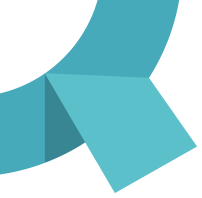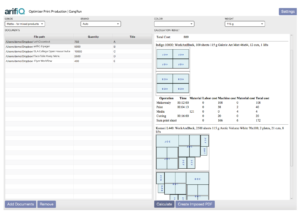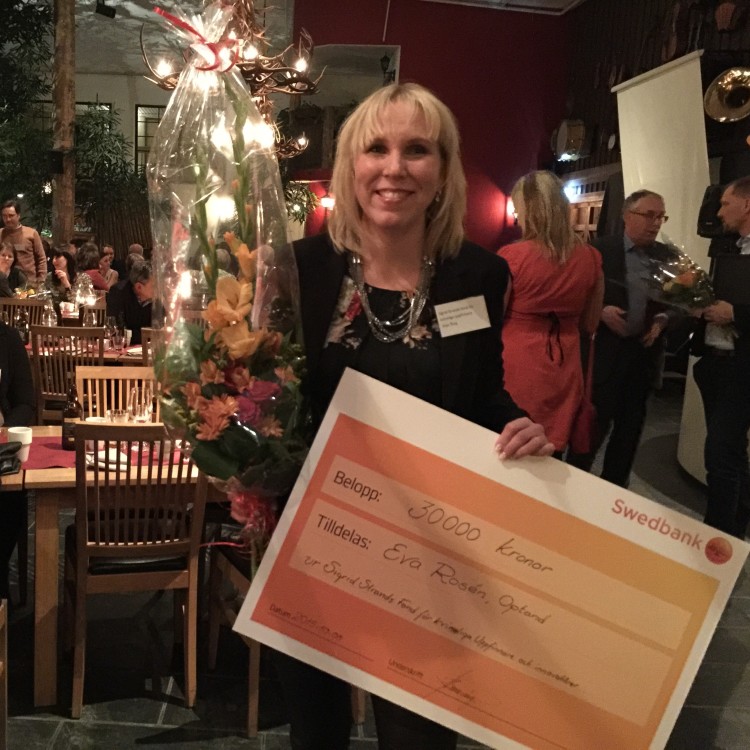arifiQ news
HP PrintOS Users Can Eliminate Major Delays on Ad-Hoc Jobs, with arifiQ Integration
arifiQ today announced that HP PrintOS solutions can now also process ad-hoc jobs automatically using arifiQ technology. This significant move has positive implications for printers and their customers worldwide.
The arifiQ estimating engine instantly and automatically creates quotes, job tickets, gang-runs, cost-optimized impositions and production routes for the full variety of print jobs moving through a workflow – including ad-hoc jobs requiring custom quotes. Now, in the first implementation of the technology in a digital workflow solution, arifiQ makes this capability available to HP PrintOS users, empowering them to take ad-hoc jobs from print customers or the sales team, all the way to the press, without stops.
The arifiQ technology makes it possible for PrintOS Box and PrintOS Site Flow to receive job tickets and, most importantly, print-ready imposed PDFs – without requiring predefined products. Jobs are quoted and imposed, with printer’s marks included, in arifiQ, with preflighting in the HP PrintOS solution.
“This is a breakthrough for the printing industry,” says Eva Rosén, Co-Founder/CMO, arifiQ Development. “arifiQ had already solved the ad-hoc quoting and job-onboarding, and now, with the HP PrintOS integration, we’ve made it possible to push ad-hoc jobs through any prepress and digital workflow, without predefined products,”
HP PrintOS and arifiQ: delivering on the promise of automation
Gershon Alon, HP PrintOS Business Manager: “Many print service providers are struggling with quickly onboarding their ad-hoc jobs into production, and arifiQ technology is addressing this issue. With the new integration ad-hoc jobs can get quoted and automatically submitted into production within minutes, saving time and money, and reducing errors. I’m happy to have arifiQ on board as a new PrintOS partner, and look forward to working together and exploring new applications.”
Hudson Printing, USA, is the first print service provider to try the HP PrintOS and arifiQ integration. CEO Paul Hudson says:” At Hudson Printing, we use PrintOS Site Flow very effectively for web-to-print catalog products. We wanted a way to use the power of Site Flow for our ad-hoc digital print jobs, too. Since we were already familiar with the quick and easy arifiQ estimating platform, I suggested that a Site Flow integration with arifiQ would be very powerful. I’ve just had a look at the solution and found it to be just what I hoped for!”
He continues: “The combination of arifiQ and Site Flow will allow us to move all digital print jobs from estimating through production faster and easier than ever before.”
For more information about arifiQ for HP PrintOS users, visit www.arifiq.com/hp/.
Workflow Automation as Easy as HBO
Workflow Automation as Easy as HBO
By Helene Smith
It’s a pleasant surprise to learn that something is simpler than you anticipated. Like HBO. I have a vague memory of getting “pay TV” when I was a kid – and remember wondering where my parents would put paper money into the cable (converter) box. When I saw that the programming came through by just changing the channel, and without paying money first, I was excited.
“Frame of reference” is a scientific term, but we use it in our everyday vernacular, as well. When I was 3 or 4, my frame of reference for seeing a “movie” was what I saw at the theater: you paid at the box office, and received a ticket to enter and watch. My frame of reference for watching TV was that you simply turned it on. I didn’t expect instant gratification. In the way I define the term, “frame of reference” is what you know to be the range of possibilities for something; more specifically, it can be what you consider the “standard” or most popular possibility within that range.
If you are reading this, you have a frame of reference for workflow automation. You probably understand, have seen, and/or possess automation that begins after creation and approval; i.e., when the job enters production. There are many companies that offer automation for the production part of the workflow.
What is your frame of reference for everything that happens before that, though? Pat McGrew, the Director and Evangelist of the InfoTrends Production Workflow Service (a service of Keypoint Intelligence), defines the processes of onboarding as follows:
Onboarding is the set of processes that start when a customer places an order and ends when the job is in the production workflow. It includes acquisition of the final job specifications, print files, associated data and resource files, job ticketing, logging the job into the accounting system, establishing proofing requirements, defining delivery requirements, and defining the payment methods.
Yeah, all that.
Viewed as one of the most painful parts of the job, every stakeholder – and especially print service providers – say that this is by far their biggest bottleneck[1]. Getting quotes, customer approval, changes, the right media, permissions, POs, art… it can take hours, days, and even weeks. In fact, it is why arifiQ’s co-founders started the company! Raised in printing, they saw the quote approval process as the biggest detriment to throughput… and profit.
What they did, then, was to invent a product that gets all of onboarding done, and more – no matter how complex or custom the job is – in a few seconds.
An accurate quote based on real-time device and inventory availability. An accurate quote on a complex, custom job. Online estimating.
With its cloud-based application in use at a growing number of sites worldwide, arifiQ knows that people do not grasp the huge benefit of its solution because a few seconds for a custom quote – based on real device and inventory availability, no less – seems impossible.
This is because no one has seen, or done it, before. It’s no one’s frame of reference.
However, there is now a new standard for onboarding turnaround time, and it’s under a minute. It’s time to add this to your frame of reference.
This means your salespeople can give a customer a quote onsite. The salesperson or the customer themselves can look at different – real — quotes while they are reviewing mockups for a campaign, even. From anywhere. They can add devices, change inventory, change the job. And still get a quote in seconds.
The arifiQ application does more. It can gather all the rest of the information Pat McGrew refers to in her onboarding definition, above; keeping it as XML data in the file itself, and/or accessing and sharing via a connection to an MIS or ERP[2].
There’s more, but I’m afraid to push your limits on a frame of reference like this one.
Fine, I’ll just tell you:
When arifiQ puts the estimate together – in seconds — it considers (and specifies) the most efficient production path, as well. This is called optimizing the workflow – and get this: when you submit the job, arifiQ creates an imposed PDF of the file.
Bottom line, you can now turn quotes around in seconds, starting at $56 per month for one sheetfed press[3]. Get approval in the next breath, and arifiQ can tell your production automation solution – maybe Enfocus Switch, or Agfa Apogee, or another – what the most efficient workflow will be… and those solutions can automate production accordingly.
Pat McGrew and her colleague at Keypoint Intelligence, Ryan McAbee, recently saw a demonstration of the latest version of arifiQ. McGrew says, “The new arifiQ Optimizer is a great option for printers who do a wide variety of work and want to optimize ganging and imposing. Pair it with the arifiQ quoting tools and this is a powerful onboarding and production solution.”
When you grow up and get a job in this industry, that can sound better than getting HBO.
[1] (Ref: RIT Study and Zwang/Sherburne article in WTT)
[2] arifiQ offers an MIS module, as well
[3] Pricing is determined by device. $56 is for a 14 x 20, sheetfed offset press, 1-7 colors.
New arifiQ Optimizer Automatically Creates Gang Runs & Imposed PDFs of Custom Jobs
|
|
HP PrintOS Users Can Eliminate Major Delays on Ad-Hoc Jobs, with arifiQ Integration
arifiQ today announced that HP PrintOS solutions can now also process ad-hoc jobs automatically using arifiQ technology. This significant move has positive implications for printers and their customers worldwide.
The arifiQ estimating engine instantly and automatically creates quotes, job tickets, gang-runs, cost-optimized impositions and production routes for the full variety of print jobs moving through a workflow – including ad-hoc jobs requiring custom quotes. Now, in the first implementation of the technology in a digital workflow solution, arifiQ makes this capability available to HP PrintOS users, empowering them to take ad-hoc jobs from print customers or the sales team, all the way to the press, without stops.
The arifiQ technology makes it possible for PrintOS Box and PrintOS Site Flow to receive job tickets and, most importantly, print-ready imposed PDFs – without requiring predefined products. Jobs are quoted and imposed, with printer’s marks included, in arifiQ, with preflighting in the HP PrintOS solution.
“This is a breakthrough for the printing industry,” says Eva Rosén, Co-Founder/CMO, arifiQ Development. “arifiQ had already solved the ad-hoc quoting and job-onboarding, and now, with the HP PrintOS integration, we’ve made it possible to push ad-hoc jobs through any prepress and digital workflow, without predefined products,”
HP PrintOS and arifiQ: delivering on the promise of automation
Gershon Alon, HP PrintOS Business Manager: “Many print service providers are struggling with quickly onboarding their ad-hoc jobs into production, and arifiQ technology is addressing this issue. With the new integration ad-hoc jobs can get quoted and automatically submitted into production within minutes, saving time and money, and reducing errors. I’m happy to have arifiQ on board as a new PrintOS partner, and look forward to working together and exploring new applications.”
Hudson Printing, USA, is the first print service provider to try the HP PrintOS and arifiQ integration. CEO Paul Hudson says:” At Hudson Printing, we use PrintOS Site Flow very effectively for web-to-print catalog products. We wanted a way to use the power of Site Flow for our ad-hoc digital print jobs, too. Since we were already familiar with the quick and easy arifiQ estimating platform, I suggested that a Site Flow integration with arifiQ would be very powerful. I’ve just had a look at the solution and found it to be just what I hoped for!”
He continues: “The combination of arifiQ and Site Flow will allow us to move all digital print jobs from estimating through production faster and easier than ever before.”
For more information about arifiQ for HP PrintOS users, visit www.arifiq.com/hp/.
Workflow Automation as Easy as HBO
Workflow Automation as Easy as HBO
By Helene Smith
It’s a pleasant surprise to learn that something is simpler than you anticipated. Like HBO. I have a vague memory of getting “pay TV” when I was a kid – and remember wondering where my parents would put paper money into the cable (converter) box. When I saw that the programming came through by just changing the channel, and without paying money first, I was excited.
“Frame of reference” is a scientific term, but we use it in our everyday vernacular, as well. When I was 3 or 4, my frame of reference for seeing a “movie” was what I saw at the theater: you paid at the box office, and received a ticket to enter and watch. My frame of reference for watching TV was that you simply turned it on. I didn’t expect instant gratification. In the way I define the term, “frame of reference” is what you know to be the range of possibilities for something; more specifically, it can be what you consider the “standard” or most popular possibility within that range.
If you are reading this, you have a frame of reference for workflow automation. You probably understand, have seen, and/or possess automation that begins after creation and approval; i.e., when the job enters production. There are many companies that offer automation for the production part of the workflow.
What is your frame of reference for everything that happens before that, though? Pat McGrew, the Director and Evangelist of the InfoTrends Production Workflow Service (a service of Keypoint Intelligence), defines the processes of onboarding as follows:
Onboarding is the set of processes that start when a customer places an order and ends when the job is in the production workflow. It includes acquisition of the final job specifications, print files, associated data and resource files, job ticketing, logging the job into the accounting system, establishing proofing requirements, defining delivery requirements, and defining the payment methods.
Yeah, all that.
Viewed as one of the most painful parts of the job, every stakeholder – and especially print service providers – say that this is by far their biggest bottleneck[1]. Getting quotes, customer approval, changes, the right media, permissions, POs, art… it can take hours, days, and even weeks. In fact, it is why arifiQ’s co-founders started the company! Raised in printing, they saw the quote approval process as the biggest detriment to throughput… and profit.
What they did, then, was to invent a product that gets all of onboarding done, and more – no matter how complex or custom the job is – in a few seconds.
An accurate quote based on real-time device and inventory availability. An accurate quote on a complex, custom job. Online estimating.
With its cloud-based application in use at a growing number of sites worldwide, arifiQ knows that people do not grasp the huge benefit of its solution because a few seconds for a custom quote – based on real device and inventory availability, no less – seems impossible.
This is because no one has seen, or done it, before. It’s no one’s frame of reference.
However, there is now a new standard for onboarding turnaround time, and it’s under a minute. It’s time to add this to your frame of reference.
This means your salespeople can give a customer a quote onsite. The salesperson or the customer themselves can look at different – real — quotes while they are reviewing mockups for a campaign, even. From anywhere. They can add devices, change inventory, change the job. And still get a quote in seconds.
The arifiQ application does more. It can gather all the rest of the information Pat McGrew refers to in her onboarding definition, above; keeping it as XML data in the file itself, and/or accessing and sharing via a connection to an MIS or ERP[2].
There’s more, but I’m afraid to push your limits on a frame of reference like this one.
Fine, I’ll just tell you:
When arifiQ puts the estimate together – in seconds — it considers (and specifies) the most efficient production path, as well. This is called optimizing the workflow – and get this: when you submit the job, arifiQ creates an imposed PDF of the file.
Bottom line, you can now turn quotes around in seconds, starting at $56 per month for one sheetfed press[3]. Get approval in the next breath, and arifiQ can tell your production automation solution – maybe Enfocus Switch, or Agfa Apogee, or another – what the most efficient workflow will be… and those solutions can automate production accordingly.
Pat McGrew and her colleague at Keypoint Intelligence, Ryan McAbee, recently saw a demonstration of the latest version of arifiQ. McGrew says, “The new arifiQ Optimizer is a great option for printers who do a wide variety of work and want to optimize ganging and imposing. Pair it with the arifiQ quoting tools and this is a powerful onboarding and production solution.”
When you grow up and get a job in this industry, that can sound better than getting HBO.
[1] (Ref: RIT Study and Zwang/Sherburne article in WTT)
[2] arifiQ offers an MIS module, as well
[3] Pricing is determined by device. $56 is for a 14 x 20, sheetfed offset press, 1-7 colors.
New arifiQ Optimizer Automatically Creates Gang Runs & Imposed PDFs of Custom Jobs
|
|









































